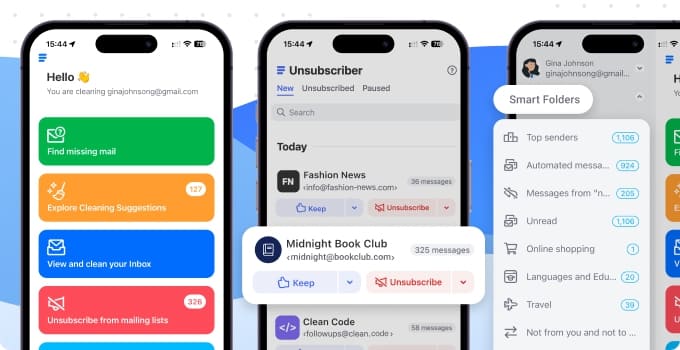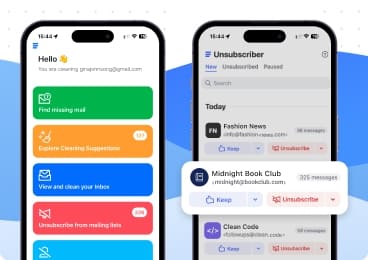Essential Steps to Prevent Forgotten Passwords
Ideally, you would have done any of the following before you forgot the login details:
- Set up your browser for auto-fill. Chrome, Safari, and Firefox all have built-in login management features that automatically fill in your username and password saved into the system. Set and—you can literally—forget!
- Similarly, your device—whether Apple or Android—also has a built-in auto-fill feature for logging in that only requires your face ID recognition or touch ID/fingerprint authentication.
- Use a third-party password manager with a single sign-on like LastPass or 1password.
- Other backup methods like saving an encrypted file in a secure cloud storage service like Google Drive or Dropbox.
- When push comes to shove, you should write down important login details in a secure notebook or document kept in a safe place. However, we don't recommend this as it's the least secure way to keep a password.
- Enable two-factor authentication (2FA), which provides an extra layer of security when someone unauthorized obtains your login information (say, with #5).
But if any of these weren't set up before that one forgetful moment, then here are ways you can recover your email password.
💡 The Clean Email app can help users easily locate essential security emails, such as password reset or account verification messages, by automatically categorizing them into dedicated Smart Folders for quick access.
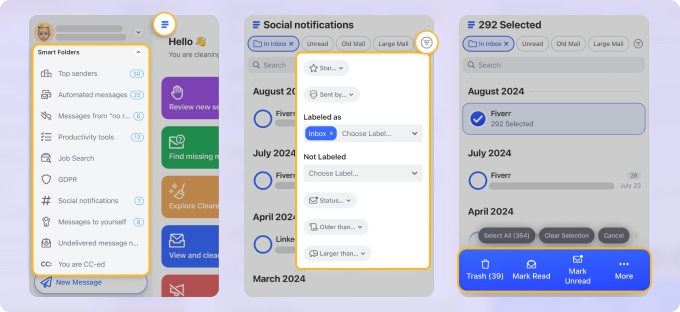

Then, with Clean Email’s powerful Auto Clean feature, users can keep only the necessary and timely recovery emails, while automatically deleting expired or outdated security messages—ensuring a clean and organized inbox without losing critical information.
How to Recover Your Old Email Password, No Matter Your Email Provider
- Open your web browser and go to the login page of your email provider. For example, if you have a Gmail account, go to https://mail.google.com/ and click the Sign in button.
- Look for a link that says Forgot password or something similar. Click it.
- Provide your email address in the field provided. Some providers might also ask for your phone number or username.
- Follow the instructions to verify your identity. This could involve:
- Phone number recovery or receiving a verification code via SMS
- Email recovery or getting a code through another email address
- Answering security questions
- Using an authentication app
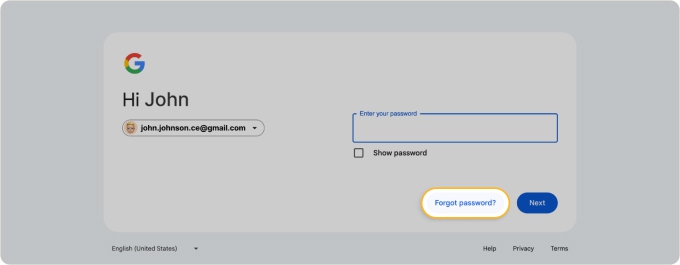

- Once you've verified your identity, follow the prompts to create a new one. Make sure it is strong and secure.
Other Ways to Remember Your Email and Password
If the steps above don't work, here are some ways you can try to remember your password without a phone number or recovery email:
- Check for past emails: Look for emails from your account that might contain your email address in the sender field.
- Contact customer support: Many email providers have a customer support team that can help you recover your mail address. Look for a contact number or email address on their website and reach out for assistance.
- Try common usernames: Sometimes, we use similar usernames across different accounts. If you have other accounts with the same provider, try using those usernames as potential options.
- Check saved email passwords: If you have saved your password on a browser or device, you can retrieve it from your settings.
How to Find Email Password in Settings
You can easily retrieve your email password from your account settings if you have previously saved it on a device or browser. Here's how to find your email password in settings for some common devices and browsers:
Windows computer
- Open the Control Panel. Here's how you can find it.
- Go to User Accounts → Credential Manager.
- Under Web Credentials, look for your email provider's website and click on it.
- Select Show to reveal your saved password.
Mac computer
- Go to Settings.
- Select Passwords in the left-hand menu. You'll get prompted to input the Keychain credentials.
- In the search bar, type in your provider's name.
- Double-click on the entry that appears, then hover over the dots to reveal the password.

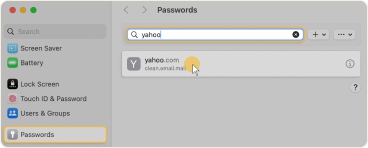
Google Chrome browser
- Click on the three dots at the top right corner and go to Passwords and Autofill → Google Password Manager to find the password Google has saved for you.
- Look for your email provider's website and click to view it. Note that depending on your computer, you might get prompted to enter your code or do a Touch ID authentication.
- Click the eye icon under Password (next to the dots or asterisks) and voila, you have your login creds again!


Safari browser
- Launch Safari, then go to Settings → Passwords.
- When prompted, type in your computer passcode, then search for your email provider's website.
- Hover your mouse to the dots next to "Password" to view it.
- Alternatively, you can also click the Edit button and there you'll find all your login credentials.
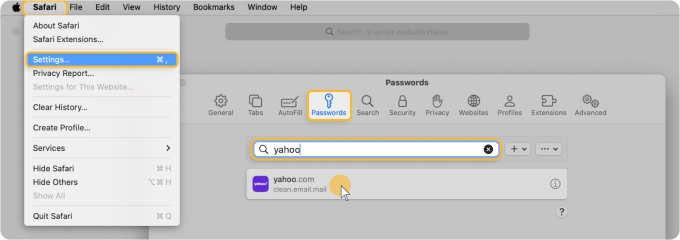
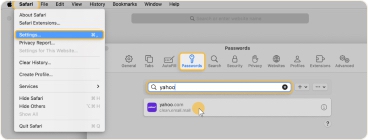
Device-Specific Email Password Retrieval
Here are some ways your device might be able to reveal your saved password.
How to Find Your Email Password on iPhone
Unfortunately, you can't retrieve a forgotten password on iPhones or iOS devices unless you're using a password manager or the built-in Keychain.
However, you can do two things to prevent this: enable AutoFill and change it altogether. Here's how:
To enable autofill:
- Go to Settings → Passwords.
- Your device might prompt your Face ID or other authentication features.
- Tap Password Options.
- Toggle AutoFill Passwords and Keys to a green color.

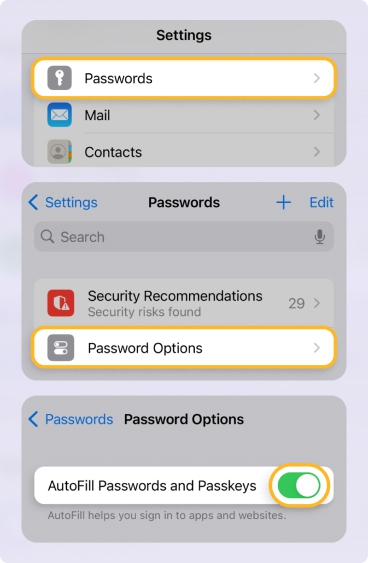
To change passwords:
- Go to Settings → Passwords. You may be prompted to enter your phone's passcode or use Touch ID/Face ID for verification.
- Type in your email provider's name. Assuming you're using the Mail app and have your Gmail and multiple other email accounts merged into it, type “iCloud ”.
- Select your mail account.
- Tap Change Password on Website, sign in to your account in the browser window that opens, and follow the steps offered by your email provider.


How to Find Your Email Password on Chromebook
If you use a Chromebook to access your electronic messages, here's how you can retrieve your password:
- Open the Chrome browser and click on the three dots at the top right corner.
- Go to Settings → Autofill → Passwords.
- Look for your email provider's website in the list and click on the eye icon next to the password field.
How to Find Your Email Password on Android
For Android users, retrieving an email password is similar to that of iPhone users:
- Go to Settings → Accounts & Sync or Accounts.
- Select the email account for which you want to find the old credentials.
- Tap on Account and then tap on the mail address.
- Scroll down and select Account settings.
- Choose Incoming settings or Server settings, and your password should be listed under "Password."
Platform-Specific Email Password Retrieval
If you want to check whether your provider can uncover your password, here are some ways Gmail and Yahoo can help.
How to Find Your Email Password on Gmail
If you forgot your Gmail credentials, here's how you can retrieve them:
- To recover your Gmail account, go to accounts.google.com/signin/recovery.
- Enter your email address and click on Forgot email.
- Follow the next prompts to enter a new password and reset your Gmail credentials.
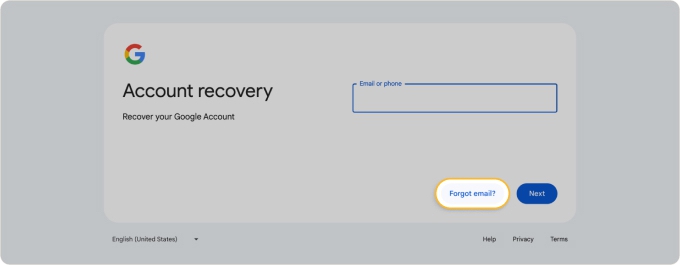
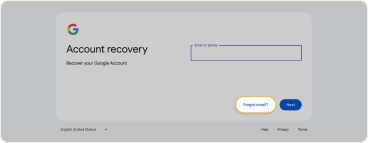
💡 Hint: These are the same steps as changing your Gmail password.
How to Find Your Email Password on Yahoo!
Here's how you can retrieve it if you use Yahoo:
- Go to login.yahoo.com/forgot.
- Enter your Yahoo address and click on Continue.
- Choose a recovery method—either through a phone number or an alternate address.
- Follow the instructions provided by Yahoo to reset your login details.
💡 Hint: Follow our guide for detailed instructions to reset your Yahoo password.
Clean Email: Easily Manage and Clean Your Inbox
Hope you're able to retrieve your forgotten password. If you do, make sure you apply the steps at the start of this article to store it in the system, so you won't have to remember and keep typing it in the future!
While it can't help in login recovery, Clean Email works alongside providers such as Gmail, Apple Mail, Yahoo, and many others to make the most of inbox management.
With unique features such as Smart Folders, Auto Clean, and Cleaning Suggestions, Clean Email users also get more custom filters and access to a range of advanced features. The app’s capabilities go beyond the built-in management tools provided by services like Gmail—especially for mobile on-the-go users.

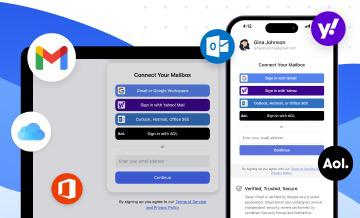
Monitoring Your Privacy
Privacy Monitor is a crucial feature that notifies you whenever your email address is involved in a data breach. In such cases, you'll receive recommendations on additional security measures, allowing you to continue your day with peace of mind, knowing your funds and data are better protected.
Sign into Clean Email, select Privacy Monitor from the left panel, and it will instantly check your account. If issues are found, change your password and enable multi-factor authentication.

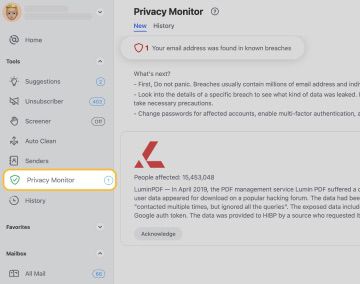
Smart Filtering and Organization
With advanced filters, Clean Email uses smart algorithms to automatically categorize and filter your emails into Smart Fodlers. These are predefined filters sorting your emails into 30+ groups, such as messages from your Top senders, Social Notifications, Online Shopping websites, and more. Users also get to do bulk actions—easily archive, delete, or move large groups of messages at once, saving time compared to manual sorting.
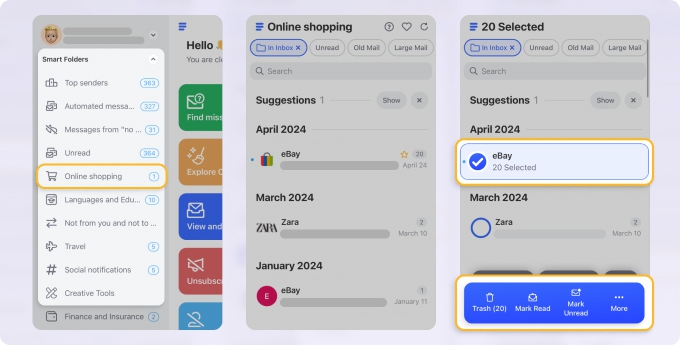

Unsubscribe from Unwanted Emails
Quickly identify and unsubscribe from unwanted subscriptions with just a few clicks using the Unsubscriber tool. Unlike Gmail’s built-in unsubscribe option, which can be hit-or-miss, Clean Email provides a more robust and comprehensive solution.
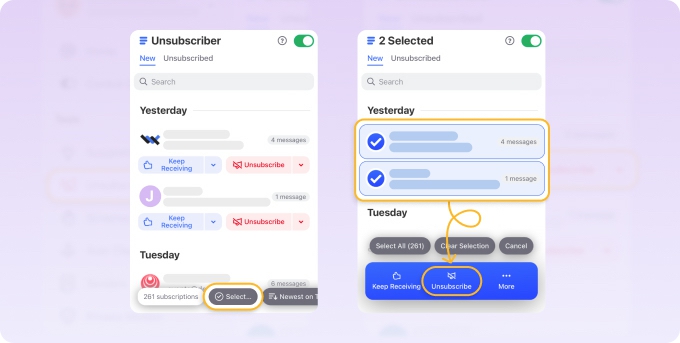
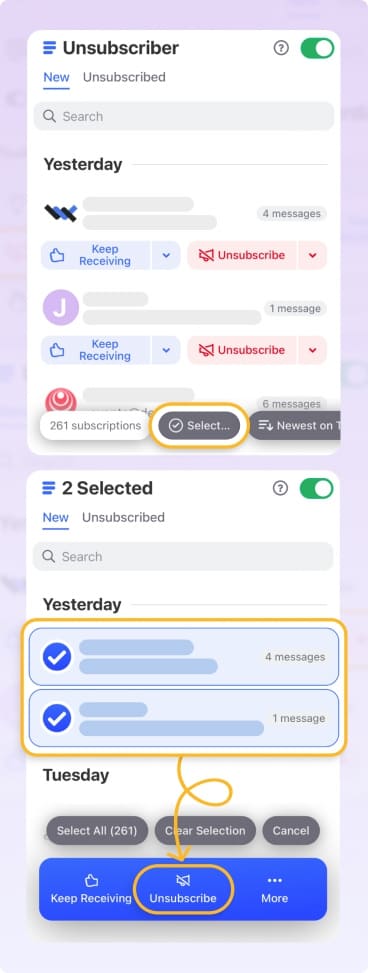
Automate Routine Tasks
Set up automation rules with Clean Email’s Auto Clean tool to manage incoming messages based on your preferences. For example, you can automatically archive old emails or move specific senders to designated folders.
Schedule regular cleanups to maintain an organized inbox without manual intervention.


Convenience for Mobile Users
Clean Email’s mobile app offers seamless integration, enabling you to manage your inbox on the go. The app provides a consistent inbox management experience across multiple devices, something that built-in features may struggle to match.
